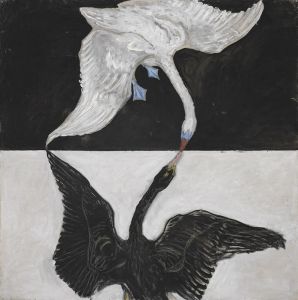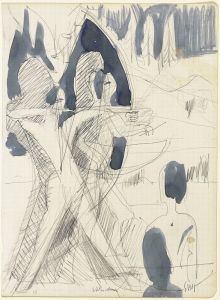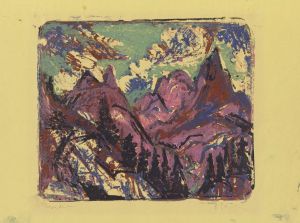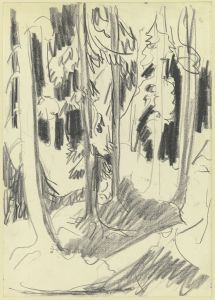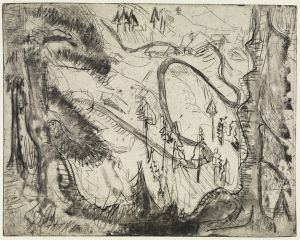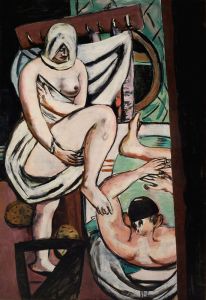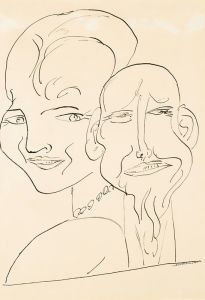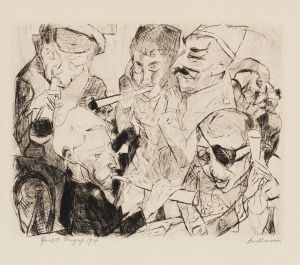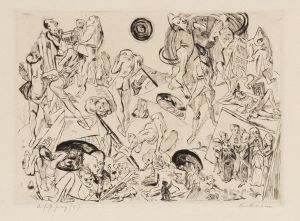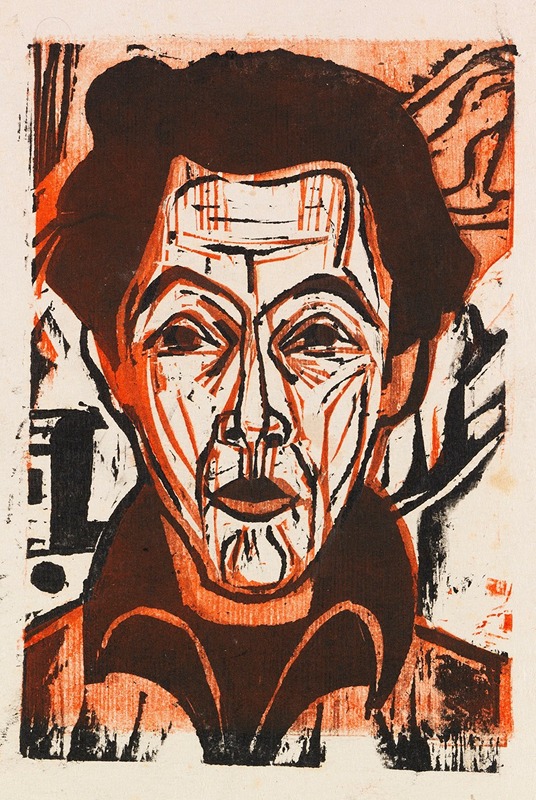
Selbstportrait
A hand-painted replica of Ernst Ludwig Kirchner’s masterpiece Selbstportrait, meticulously crafted by professional artists to capture the true essence of the original. Each piece is created with museum-quality canvas and rare mineral pigments, carefully painted by experienced artists with delicate brushstrokes and rich, layered colors to perfectly recreate the texture of the original artwork. Unlike machine-printed reproductions, this hand-painted version brings the painting to life, infused with the artist’s emotions and skill in every stroke. Whether for personal collection or home decoration, it instantly elevates the artistic atmosphere of any space.
Ernst Ludwig Kirchner, a prominent German expressionist painter and one of the founding members of the influential art group Die Brücke, created several self-portraits throughout his career. These works provide insight into his artistic evolution and personal psyche. Kirchner's self-portraits are notable for their bold use of color, dynamic compositions, and emotional intensity, reflecting the broader themes of the Expressionist movement.
Kirchner's self-portraits often reveal his interest in exploring identity and the human condition. His style is characterized by vivid, sometimes jarring colors and distorted forms, which convey a sense of psychological depth and tension. This approach aligns with the Expressionist aim to depict subjective emotions and experiences rather than objective reality.
One of Kirchner's notable self-portraits is "Self-Portrait with Model" (1910), which exemplifies his distinctive style. In this painting, Kirchner presents himself alongside a female model, a common motif in his work that underscores his fascination with the relationship between artist and muse. The figures are rendered with elongated forms and angular lines, set against a vibrant, abstract background. The use of bold colors and exaggerated features serves to emphasize the emotional and psychological aspects of the scene.
Kirchner's self-portraits also reflect his personal struggles and the impact of historical events on his life. During World War I, Kirchner volunteered for military service but was discharged due to a nervous breakdown. This experience profoundly affected him, leading to a period of intense psychological distress and influencing his subsequent work. His self-portraits from this time often convey a sense of anxiety and alienation, capturing the turmoil of his inner world.
In the 1920s, Kirchner moved to Switzerland, seeking solace and recovery in the tranquil landscapes of the Swiss Alps. His self-portraits from this period show a shift in tone, with a greater emphasis on harmony and introspection. The colors become more subdued, and the compositions more serene, reflecting his efforts to find peace and stability.
Kirchner's self-portraits are not only significant for their artistic merit but also for their contribution to the understanding of Expressionism as a movement. They exemplify the Expressionist focus on individual perspective and emotional resonance, challenging traditional notions of representation and pushing the boundaries of modern art.
Throughout his career, Kirchner remained committed to exploring the complexities of human identity and experience through his self-portraits. These works continue to be celebrated for their innovative approach and profound emotional impact, offering a window into the mind of one of the 20th century's most influential artists.





